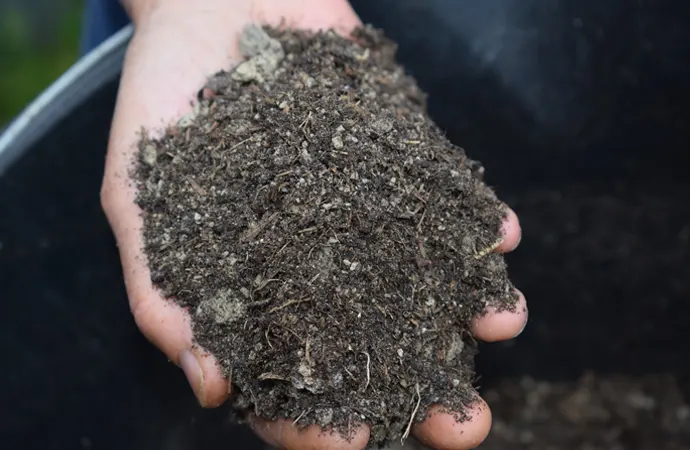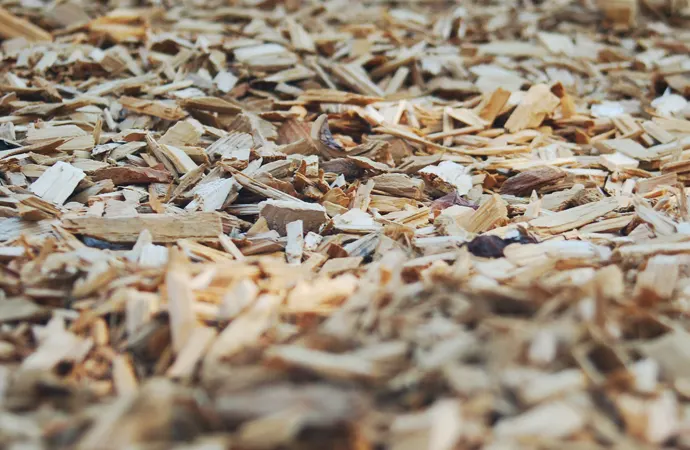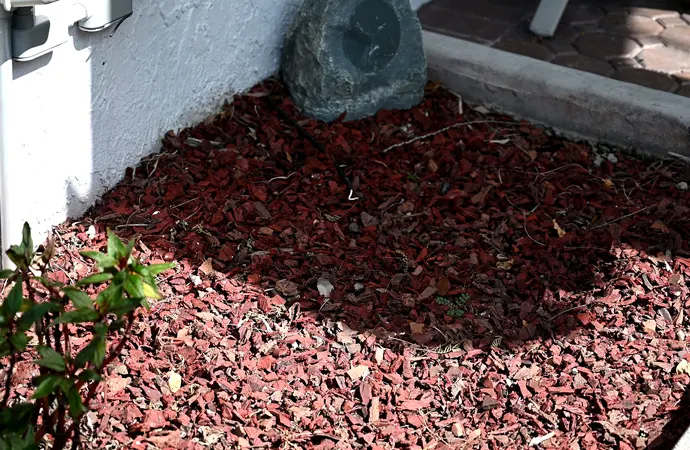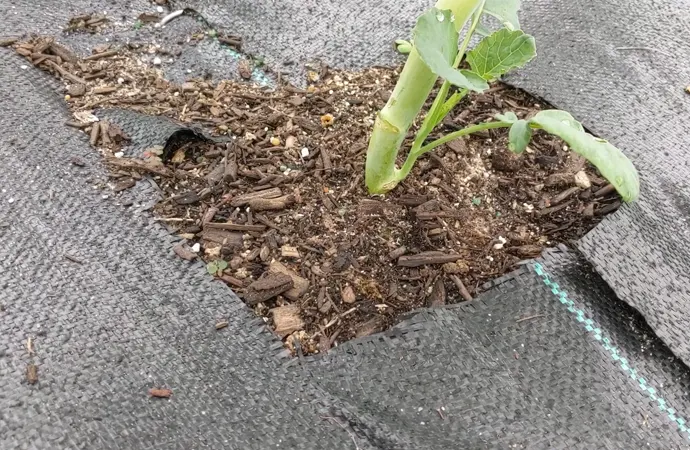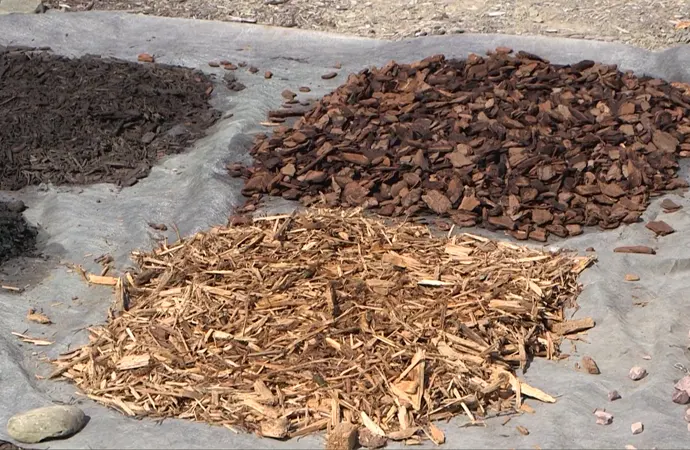21 Types of Mulch; Which Mulch is the Best for Your Needs?
Mulching is a process that has been used for centuries to improve soil fertility, conserve soil moisture, and reduce the growth of weeds among others. But the application of mulch involves the use of different materials.
There are three types of mulch including organic, inorganic, and double-colored. However, organic mulch has proved to be the most popular type with more than 70% of commonly used mulches being of this type.
From personal experience, organic mulch is my go-to soil and plant cover. But to help you understand different mulch materials below is an overview of the three types of mulch.
Let’s Get Down to Open Each Types of Mulch
1. Organic Mulch
This is the most used type of mulch. Organic much is mainly made of plant and animal material. The reason it is called organic is that it’s made of components that were once living.
But once these components decompose over time, they can be highly beneficial in improving the soil structure as well as the quality by facilitating the addition of nutrients.
As the used type of mulch, organic has several benefits, including:
- Maintain the soil temperature
- Reducing loss of water from the soil via evaporation
- Minimizing the chances of erosion and loss of soil nutrients
- Slowing down the growth of weed.
- Protecting tender plants during extremely hot and cold seasons.
What I love about this mulch is that it can be readily be made at home since there are usually many living things around us.
The most common materials used to make this type of mulch include:
A. Dry leaves
you can collect them from your garden or any other outdoor space. Dry leaves make good mulching materials but their lightweight nature makes it hard to effectively collect them in an outdoor space.
To reduce the chances of the dry leaves being carried by the wind, I prefer to cover them with canvas or any other heavy material.
It should be noted that leaves have almost 80% of the total tree’s nutrients including phosphorus, carbon, and potassium.
B. Compost
it’s also known as manure or peat. This material makes up most of the organic mulch since its highly effective in improving soil fertility.
However, you need to be very careful when applying it since you need to spread it on the soil to create a 2-3-inch layer.
C. Grass clippings
This is another readily available material that can be available seasonally from cut grasses that are left behind.
They are nitrogen-rich sources that may be ideal in developing the roots of your garden plants.
D. Crop residues
They include varieties such as paddy & wheat straw. Besides that, crop residues such as groundnut shells may be great in creating organic mulch.
What I love about crop residues is that they are not only nutrient-rich but also effective in retaining the soil’s moisture content.
But you need to be careful when applying this much since a good layer should range between 5 and 10 cm.
E. Sawdust
Creating organic mulch with sawdust is a common practice. Well, this type of material is great for use with acid-loving plants due to the high carbon-nitrogen ratio.
However, be extra careful when using sawdust mulch since it’s not ideal for use in acidic soils.
F. Newspaper
It’s another lightweight material that’s cheap and readily available. Newspaper is great for keeping weeds down, cooling the roots of the plants, especially during summer, and fertilizing the soil.
Besides adding organic matter to the soil, it’s generally effective in helping to save water.
G. Composted manure
This is a slow-release type of plant fertilizer. Generally, composted manure usually supplies small amounts of nutrients to plants over an extended period.
Well, this makes it one of the most acceptable types of mulch for plants. If you are an organic gardener like me, you probably know how to make your compost.
You can use it as well as mulch. By doing so, you will also be supplying your plants with extra nutrients.
H. Peat moss
It’s a long-lasting type of mulch that’s popular due to its ability to lower high soil PH. Generally, peat moss is ideal for use on plants that need acidic soil conditions.
However, ensure that you exercise precaution when using peat moss since it’s mostly used to provide shelter to pests such as mice and snails.
Research studies also indicate that peat moss can significantly drain oxygen levels in low-draining soils.
I. Bark Mulch
It’s quite interesting how wastes such as bark can be turned into beneficial gardening components. The best type of bark mulch is usually from shredded hardwood.
Its popularity is driven by the fact that is cheap. It also provides a reasonable way of recycling industrial wastage especially if the barks are from paper and lumber industries.
This material is used to increase soil fertility. Barks are usually available in a wide range of sizes and sources including dyed and natural types
Also READ: Top 7 Best Mulches (Ultimate Buying Guide)
J. Municipal Tree Waste
Mulching materials are usually readily available at no cost. However, not everyone can have access to these materials and they may be forced to buy tree waste from the local government.
In most cases, municipal tree much is used to create garden paths.
2nd. Inorganic/Synthetic Mulch
It’s the opposite of organic mulch since it is made from materials that were previously non-living things. In some instances, inorganic mulch is made from synthetic material.
Inorganic mulches are great in creating barriers between plants and weeds. Besides that, they are ideal for decorative purposes.
Just like organic mulches, inorganic mulches also help to conserve the soil’s moisture content by slowing down the process of evaporation and facilitating moisture retention in the root zone.
The main types of inorganic mulch include:
A. Plastic Sheeting
It involves the use of polyethylene material. While some people may find this inorganic material appealing, I don’t advocate for its use due to personal environmental concerns.
However, when it’s used as a mulching material, it can be effective in absorbing longwave radiation.
Additionally, it’s highly effective in increasing temperature around the plant, especially on winter or cold nights.
Be ready to go the extra mile.
With plastic sheeting, you have to be ready to go the extra mile of ensuring that your plants can grow fully through the holes or slits in the plastic sheeting wall.
Generally, this mulching technique is used to grow large-scale vegetables.
Significantly effective.
It has shown to be significantly effective in controlling the rapid growth of weeds and reducing the rate of nutrient loss through leaching.
Besides that, it prevents soil dryness by conserving the moisture content.
Be extra careful.
When implementing plastic sheeting mulches, you need to be extra careful since plastic material has had a significant effect on the environment.
its, therefore, important that you dispose of the material correctly to reduce environmental damage.
What to Determine for The Type Plastic Sheeting Material for Mulching?
Several factors determine the type of plastic sheeting material for mulching to be used and the most common one is the crop duration. Below is an overview of the correlation between the plastic thickness and the duration of the crop.
- Short duration crops/ annuals: 20–25-micron thickness
- Medium duration/biennials: 40–50-micron thickness
- Long duration crops/ perennials: 50–100-micron thickness
There are two main types of plastic mulches that you can choose from and they include:
I. Black polythene mulch: it’s ideal for use in cold climatic conditions since it normally helps to keep the soil warm. Black polyethylene mulch is highly effective in blocking sunlight from passing through it hence is effective in inhibiting the rapid growth of weeds.
Besides that, it can be used to maintain the soil’s moisture content.
II. Clear polyethylene mulch: its clear nature makes it possible for the sunlight to pass through. This means that it’s not highly effective in minimizing the rapid growth of weed. However, you can still control the growth of weed by using an herbicide coating on its insides.
This type of polyethylene mulch is ideal for use in nurseries and hilly areas. Additionally, it can also help to increase the soil’s temperature.
Note: while I detest the use of polyethylene as it’s a serious environmental hard, it’s clear that there is a lot of work that comes with using such a material.
This is one of the few types of mulch that you have to be careful while using it and if you have a better alternative, then you should always consider it first before choosing this.
B. Rubber Mulch
It can be rubber pellets and shreds. I find rubber to be quite an interesting type of mulch since rubber is a durable material hence it can be used for years. but even though rubber is usually recycled or simply made from ground tires, it’s been a cause of much controversy due to its environmental effects.
Besides that, it’s quite expensive but if you are ready to leap of faith, then you can consider it a solid investment since rubber can last for years.
Doesn’t soak in water.
Rubber material doesn’t soak in water and this means that your plants will always have full access to rainwater. Besides that, pests such as carpenter ants and termites can’t feed on rubber.
But this can also be a serious downside since it may deter other beneficial insects as well.
Is it like plastic sheeting?
Just like plastic sheeting, I wouldn’t advocate for the use of rubber since it’s extremely hard to break down rubber and this means that it doesn’t provide the soil with any beneficial nutrients.
Besides that, rubber with toxic chemicals and heavy metals can be led to soil contamination and eventually end up killing the plant.
If you must use rubber material for mulching, make sure that you do personal research to consider the source of the rubber and its material toxicity.
C. Pea Gravel
I love pea gravel’s diverse profile. You can use this material for anything ranging from designing walkways to marking garden borders and mulching.
It’s worth noting that pea gravel has a soft texture and this makes it ideal for creating footpaths as well as suppressing the growth of weeds.
However, you have to understand that it doesn’t decompose, unlike organic mulch.
However, it’s still effective in holding moisture content. It’s quite popular because it can be used to create an impressive landscape. Despite its good profile, pea gravel is often overlooked as a mulch material.
What makes it even more outstanding is that it comes in different sizes and shapes.
D. Landscape Fabric
It’s a mulching technique that’s used to block the growth of weed. Landscape fabric, just like its name suggests comes in the form of sheets that are normally applied to the upper soil layers of the garden.
But it has also been drawing controversy due to its inorganic nature.
There are two distinct things that I know of landscape fabric, you either love or hate it. But if you install it correctly, you will like it.
For effectiveness, it’s generally advisable to use landscape fabric with organic mulches since it will end up decomposing very fast.
3rd. Double Colored Mulch
Doubled-colored mulch is one of the most unique types of mulch. It’s wavelength selective and has been specifically designed to effectively absorb the presence of certain wavelengths originating from the sun’s radiation.
As a result, this type of mulch can cause noticeable changes in the light spectrum that the plant needs for healthy growth and development.
Research studies indicate that a double-colored mulch can be effective in controlling various types of plant properties such as root development, fruit size, plant height, and color among others.
Besides that, this mulch is ideal for use in hot summer conditions since it doesn’t re-emit much heat. The common types of this mulch include:
A. Red-black
It involves the use of a partially translucent material. As a result, it normally allows radiation to pass through it and can, therefore, make the soil warm.
B. White-black
It creates a film that helps to naturally cool the soil. a white-black double-colored mulch can transfer almost 60% photoactive radiation into the plant, thereby facilitating rapid healthy growth.
C. Yellow-black or yellow-brown
It’s highly effective in preventing pests and diseases. This is because its outside-facing yellow side usually attracts pests such as whiteflies, acting as a trap.
Conclusion
Mulch is effective in reducing the amount of water loss from the soil through evaporation. Besides that, it helps to maintain the soil structure and some mulch materials can be beneficial in providing the plants with beneficial nutrients.
Organic mulch, unlike inorganic and double-colored, is the most popular type of mulch. It has significant plant benefits that promote the overall healthy growth of the plant.
However, you can still choose the other types based on your personal preferences.

